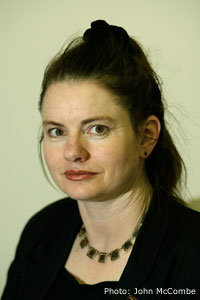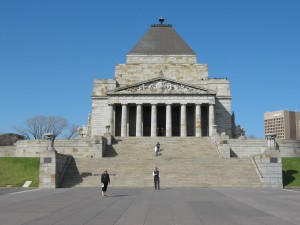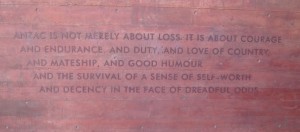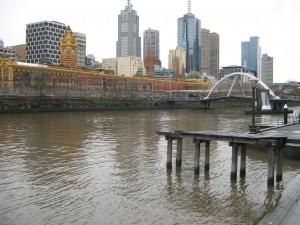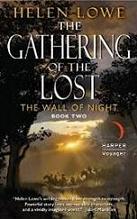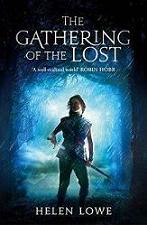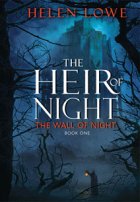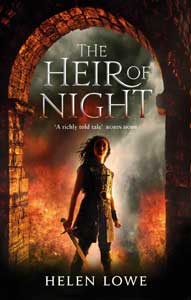I’m in Melbourne!
And have been having a fun time exploring on foot, by tram, and by riverboat, ahead of Worldcon, which starts officially this afternoon.
Yesterday, 1 September, was the first day of spring and the weather has been mixed, with balmy sunshine followed by cold winds and overcast skies, followed by rain, all in fairly quick succession. But it still feels warm enough to me, despite the rain, so I have not let it stand in the way of seeing the city—which in my book always requires some pavement pounding. So on the first day I took in several gardens and monuments, including the original Melbourne observatory buildings at the entrance to the Botanic Gardens and the Victorian Shrine of Remembrance (Melbourne is the capital of the Australian state of Victoria.)
I am interested in astronomy, but even so was fascinated to learn of the day-to-day importance of the observatory to the early colonists, both in terms of navigation, but also of predicting weather—because, of course, initially they had no local knowledge to draw on. The Shrine of Remembrance though, was really impressive, both physically and in terms of the exhibitions and interpretation commemorating the sacrifice of Victorian ANZACs in both World Wars 1 and 2. ANZAC is an acronym for the Australia New Zealand Army Corps, which first served together in World War 1, so it is a subject that also speaks to me quite deeply as a New Zealander.
I was also impressed to find a separate memorial to the Siege of Malta, which commemorated both the heroism of the Maltese people and also the convoy, comprising British, Australian, New Zealand and American merchant ships, which effectively lifted the siege. But of the 13 merchant ships that set out from London, and despite a Royal Navy escort of nearly 50 vessels, only 5 made it to Malta on 15 August 1942. Even these 5 were badly damaged and the tanker Ohio so much so that if had to be towed into port. I knew the basic story of the siege, but not of the convoy, and I was moved to find both remembered on the far side of the world.
On a lighter note, Melbourne is a beautiful and sophisticated city and I have been enjoying many aspects of that. I am fortunate to be staying in the Southbank area of the central city, which is built on the Yarra River, and so able to enjoy the river walks, the wonderful decorative bridges and public art that characterises this space. Venturing across the river into the commercial and retail hub, I am impressed not just by the glass towers (I come from a very small city, ok, and one that rarely exceeds medium rise by Melbourne standards; let’s not even mention the Empire State Building!) but also by the wonderful legacy of historic buildings that still remain. Even more fun are the narrow lanes that run between the main streets, with hundreds of little shops, some luxury, some hole-in-the-wall cobblers or barbers or eateries, but many of them featuring wonderful heritage features: wrought iron, stained glass and mosaic floors.
Not that it was all shopping by any means—I would not, after all, like you to think me lightminded or worse, frivolous—so I hasten to add that I also visited the Immigration Museum, which is currently featuring an exhibition on the “Afghan” (i.e. mainly Afghan, but also what we would now call Pakistani and North Indian) cameleers who played such an important part in exploration of the Australian interior, and also in maintaining supplies and communication to the remote Outback stations. A fascinating history—and also finally throwing light (for me as a New Zealander) on why the overland route from Adelaide to Alice Springs is known as The Ghan. The train that now follows that route—and is reputed to be one of the world’s great train journey—is also known as The Ghan.
And finally, since I am staying just round the corner from the National Gallery of Victoria, I also took the opportunity to partake in Art After Dark and see the exhibition 0f European Masters that is currently on display there.

